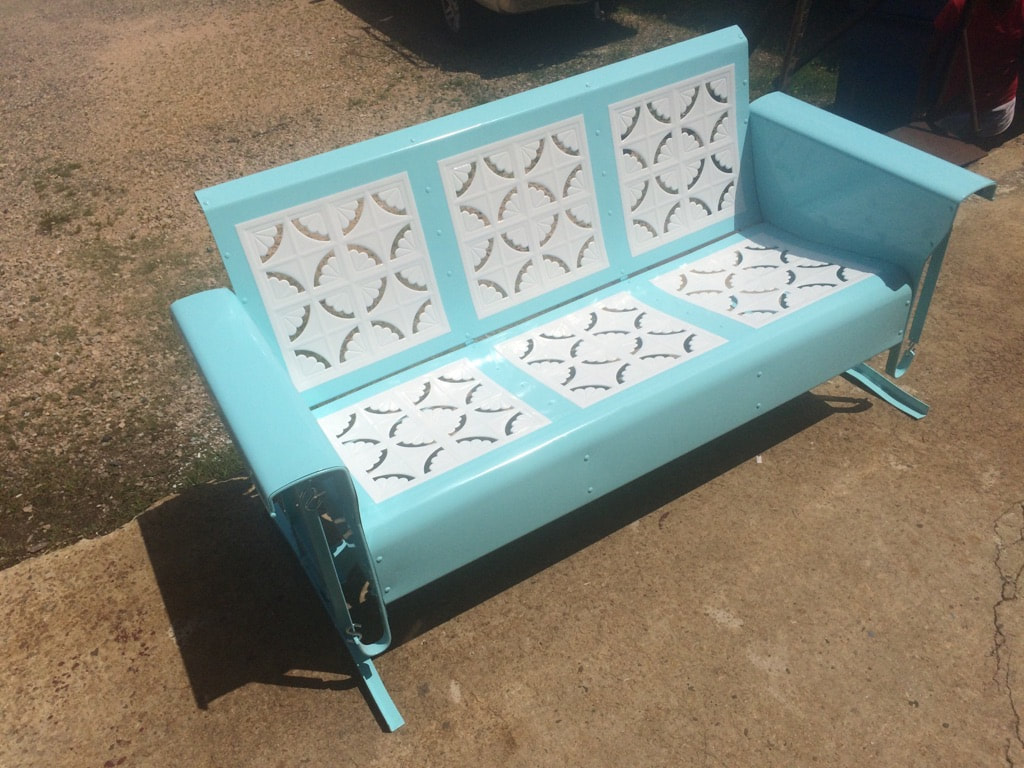
What we like: UV-resistant design, adapted for younger children, adjustable chains You can even adjust the chain’s length depending on your set’s beam height, ensuring maximum compatibility.

#VINTAGE METAL GLIDER UPGRADE#
No matter the weather, this glider set will not degrade, guaranteeing years of fun for your kids and all their friends.Īll mounting hardware is included in the package, letting you upgrade your existing swing set immediately. This seesaw glider swing is supported by two sets of 51” stainless steel chains on each side, making it naturally resistant to water, rust, and UV exposure. This product features an extra-large seesaw swing unit, an eye-popping blue design, and durable plastic construction, rated to support up to 200 lbs so even older kids can ride this safely.
#VINTAGE METAL GLIDER INSTALL#
If you’re looking to install one of the best 2-person glider swing sets available today, the Mega Rider Swing is the ideal choice. What we don’t like: Higher price tag than other models As mentioned above, if you have a photo of your favorite glider please email it to us.What we like: Extra-robust design, supports up to 200 lbs., eye-catching design We are working on a definitive stamping pattern post. See below.įinally, if you can find a trademark on your glider, then by definition, the goods are identified! On some, but not nearly all Bunting gliders, you may find a “Bunting Glider Company” trademark stamped on the right (as you are sitting) arm. While Bunting had similar stamps, the King pattern is easily distinguished. But for our purposes here, we’ll examine the standard King Glider pattern which seems to have been a simple “sun burst”. Please forward us any photos of stamping patterns you may have.
#VINTAGE METAL GLIDER SERIES#
That is an in-depth and exciting series of posts we are very much looking forward to. We want to produce a canonical Bunting stamping pattern listing. Other major differences between the gliders include the seat back and bench stamp patterns, and trademarks. This difference is not observed in the futuristic Bunting Glide Deck glider (which we will post on later). Bunting glider feet are more arched, as can be observed by contrasting the King Patent with the “1941” design patent. A more subtle Bunting differentiation is found when examining the glider’s feet. as seen in the King patent below, and in higher res, here.

The King Glider, for example, uses (again) a more utilitarian approach, straight supports. Lateral Frame AssemblyĪnother difference between Bunting glider and others is the “1941’s” graceful lily-like lateral frame assembly. The King glider seat back, in contrast, terminates in a utilitarian J-hook. Interestingly, the “Curl” does not appear in the 1941 design patent. Turns out, as we found in designing Local Patio’s manufacturing processes, the “Curl” is quite hard to reproduce.īunting likely included it as a flourish others would find difficult to copy. To our knowledge, Bunting consistently produced the “Curl” on all its vintage metal gliders starting with the “1941” glider and going all the way through to production end, around 1974.Īs an easy contrast, the King Glider doesn’t have the iconic curl (see below). The easiest way to identify a Bunting Glider is to look for the tell-tale “Curl” located both at the top of the seat back, and at the bottom of the bench.



 0 kommentar(er)
0 kommentar(er)
